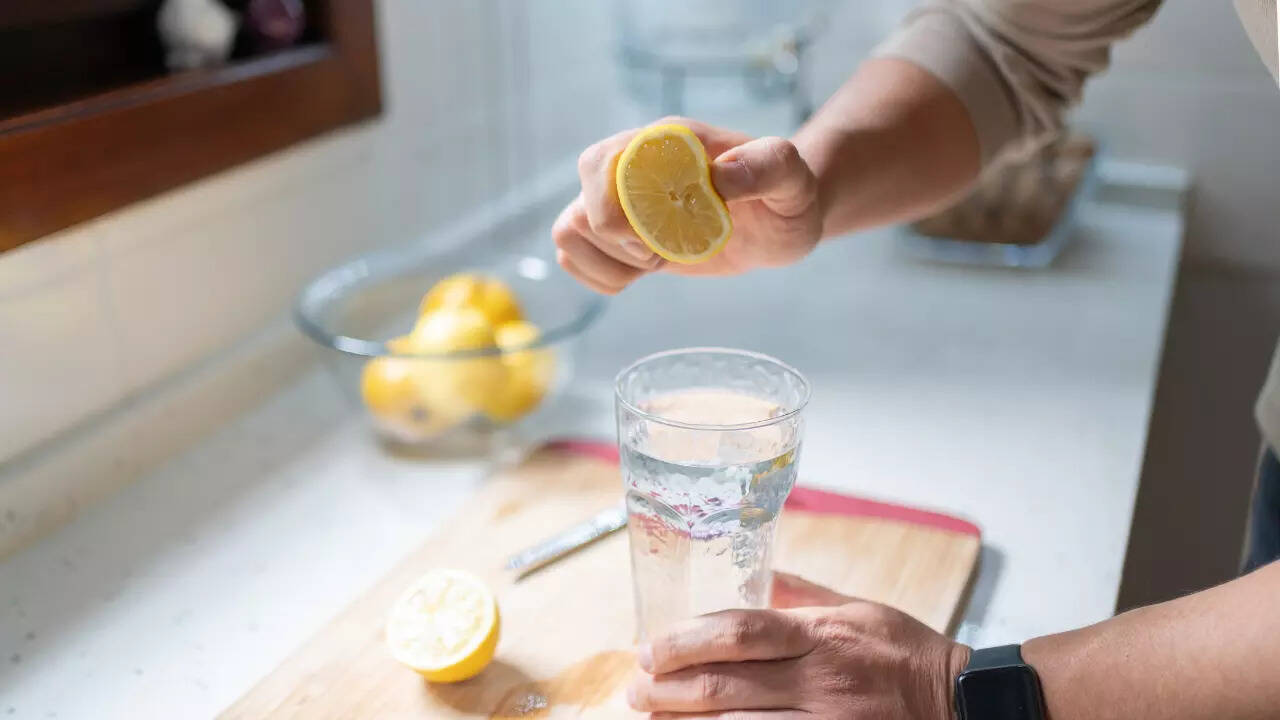Water is widely considered the healthiest liquid for the human body, but one gym-goer has revealed she was warned by her doctor to cut back on H2O in fear it was slowly killing her.
Writer Claire Cameron was in good shape, either running or going to the gym every day as she was training for a marathon, and she had a healthy diet.
Because of her rigorous training, and the general idea that staying hydrating is good for you, Cameron was drinking up to four liters of water a day.
But during a doctor’s visit two years ago, alarm bells started ringing after she had a routine blood test and her doctor asked if she had experienced loss of consciousness, dizziness, confusion, seizures or an altered mental state.
While Cameron hadn’t experienced any of these things – just mild headaches – her doctor said, based on her blood test results, it was only a matter of time.
Her lab work showed she had alarmingly low levels of sodium in her body.
Sodium helps regulate the body’s fluid levels and control blood pressure. Severe low sodium, a condition called hyponatremia, can lead to serious complications like brain swelling, seizures, coma, and ultimately, death.
Drinking too much water can cause hyponatremia to occur because the kidneys’ ability to excrete water can be overwhelmed and this dilutes the sodium levels in your bloodstream.

Water is widely considered the healthiest liquid for the human body. But one health gym-goer revealed she was drinking so much it nearly killed her (stock image)
In a piece for Slate, Cameron wrote on top of her water consumption she would consume more liquid through her ‘morning coffees, a soda here and there, food (water filled!)’, and any other drinks she happened to have.
The writer explained: ‘Altogether, I was getting too much water. Way, way too much. And now I was in danger.’
According to the Mayo Clinic, women should drink about 11.5 cups of water per day (2.7 liters), while men should consume 15.5 cups (3.7 liters).
However, if you’re exercising in the heat, aim for four to eight ounces every 20 minutes, depending on the intensity of the workout.
Cameron was drinking to keep hydrated but she wasn’t replacing the sodium lost from her sweat through sodium-rich foods and drinks.
Sports drinks packed with electrolytes are one of the most convenient options for athletes or those engaging in intense physical activity to keep their sodium levels in check.
Healthy sodium levels in the blood typically range from 135 to 145 milliequivalents per liter (mEq/L) or millimoles per liter (mmol/L) and a level below this range is considered hyponatremia, or low sodium.
Cameron did not reveal what her reading was, just that it was below the healthy level.
Hyponatremia occurs when drinking too much water within a short time frame overwhelms the body’s organs, namely the kidneys.
Normally, the kidneys filter out extra water and waste, producing urine.
Dr Thunder Jalili, a professor of nutrition and integrative physiology at the University of Utah, previously told the Wall Street Journal that a person’s kidneys can typically filter out one liter of water every hour.
‘When you drink more than a liter of water an hour, that’s when you run into the risk of potentially diluting your electrolytes,’ he said.

John Putnam (pictured), then 74, suffered heart attack-like symptoms after drinking too much water
These include sodium, which is vital for regulating the amount of fluid in the body, but having too little of it causes water to build up around the body’s cells.
The cells then swell, leading to nausea, vomiting, headaches, confusion, muscle weakness, dizziness, and restlessness. But in more severe cases, such as Putnam’s, it can lead to heart attack-like symptoms such as chest pain.
Cameron said her doctor’s response was ‘blunt’ and she was told that if she didn’t change her habits she would be ‘risking far worse than a headache.’
She was told to drink no more than a liter of fluid daily for several days in order to bring her sodium levels back to a healthy baseline.
As a person used to drinking up to four liters a day, she found that cutting back was ‘hard.’
Two years on from her initial diagnosis, Cameron wrote that she is better at monitoring her water intake but she is still not perfect.
She concluded: ‘Have I learned my lesson? Sort of.
‘I’ve been diagnosed with hyponatremia more than once since that first instance; my doctor thinks I’m one of those people that just run a little low on sodium.
‘But I have made changes. I make a conscious effort to notice my thirst while exercising. When I know I’m going to be sweating a lot, I also take an electrolyte mix called LMNT, which I order online; it contains almost half of my daily recommended sodium.
‘I also feel entirely at liberty with the table salt. It’s working for me.’
Cameron’s story comes about a year after Texas resident John Putnam, then 74, suffered heart attack-like symptoms after drinking too much water.
Putnam was working as a landscaper in June 2024 when the temperatures reached 100 degrees Fahrenheit (38 Celsius).
By the time he mowed his second lawn of the day, Putnam was so thirsty he had consumed almost three gallons of water within five hours.
However, he was overcome with nausea and fatigue, which turned into chest pain and trouble breathing by evening.
Putnam was rushed to the hospital for what he believed was a heart attack. Instead, doctors told him he had suffered water poisoning.
Researchers have suspected that water toxicity is on the rise due to an increase in heat waves across the US.
Research from the National Institutes of Health (NIH) suggests that the condition affects anywhere from 3million to 6million Americans every year, or at least one in 100 people.
Hyponatremia can also be more common in older adults like Putnam. According to the Mayo Clinic, this is because older patients are more likely to take medications or suffer from conditions that lower their sodium levels.
In severe cases of hyponatremia, brain cells swell and lead to pressure inside the skull. Blood flow to the brain then becomes reduced, resulting in seizures, coma, and even death.
Treatment for hyponatremia depends on the severity of the condition. For mild cases, doctors may restrict fluids. However, more severe cases may require medications to manage low sodium levels or replacing sodium intravenously.
Source link


